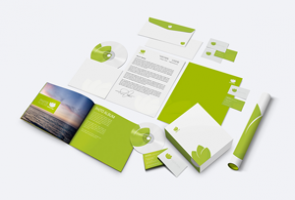Sit back and get comfy. I have a story to tell you. This story is about a time when there were no cellphones, no Internet, no 24/7 availability of information… you get the idea. We’re talking about the Dark Ages – the time before around 1994, when we first started seeing dot-com everything emerge.
Content creation was a thing, too; it just took a very different form and was a lot more costly. Ditto with copywriting services. Just ask anyone who ever paid to take out a full-page ad in Time magazine or USA Today. Back then, that’s how you reached people. You put ads in the paper, in magazines, and on radio and TV. If you were a real bigshot, you could afford to create billboards or grace the back cover of a popular magazine (like Time or Esquireor any number of others).
The business card used to be the top B2B networking tool, and printed brochures and catalogs did the job that the average website does now.
Here’s the thing, though: Most of these things still exist. Believe it or not, people still read magazines. They still read newspapers. They’ll still take your card if you hand it to them, and, yes, there are still major companies that produce and distribute catalogs. You probably get them and toss them right in the trash these days, thinking, “If I need something, I’ll just go to their website.”
I want to challenge you to look closely at the next one that shows up in your mailbox. I want you to notice what these companies are doing to bridge the gap. If you look carefully, most of them now direct you to their website to place an order, but they also offer the traditional print or toll-free number options, as if “toll-free” is still a selling point.
The truth is, there is still plenty of people out there who respond to a “toll free” number even though most mobile carriers did away with the concept a long time ago (as did most traditional “landline” carriers). That’s why the information is still there and the ability to place an order that way still exists.
The point is that smart business owners recognize the value in fusing their real-world marketing efforts with their online ones, and there are many highly effective ways to do it. For now, I want to give you a few basic tips that will help you leverage the power of print to build your brand online.
#1 – Get the Info Out There
If you want to transition more of your customers into using your online services, they have to know they’re out there. The way they know is by seeing your website address and social media pages everywhere. This is why I so strongly recommend keeping things simple. Obviously, people can’t click on print, so they have to be able to remember a URL long enough to put it in their phone or laptop.
When you are producing print copy, be certain to treat your online addresses like headlines. Attract attention to them. Be sure people know they can find you online. You can even offer a discount on online orders as an incentive for using the website instead of the 800 number.
#2 – Use QR Codes Liberally
Don’t think that QR codes are just a passing fad. They are an excellent way to integrate your online channels with your printed content. Remember what I said about having to remember the URL? Well, this is a solution especially for longer page names or landing pages with affiliate data that no one is going to remember. Generate a specific QR code for specific pages, websites, or social channels. Whatever relates best to the copy (and appeals to the target audience) can be referred to the reader with a quick scan.
#3 – Update Your Contact Info
Instead of your physical address, get into the habit of only putting your website or social channel on your business literature along with a reliable email address. Once people get to the website, they can find the information they need, although the vast majority of the time, an email address is going to be more than adequate. As part of the success equation, be sure to respond quickly to online inquiries that come from print sources. It will reinforce the idea that dealing online is a reliable and efficient way to do business with you.
#4 – Keep up on the Effectiveness of Print Media
Be sure that the expense of producing and distributing print media is still a cost-effective option for your business. While it might be right now, a year or two (or five) down the line, it might not be. The real goal here is twofold: to appeal to a demo that responds to print media and to help them transition to a more 21st century business model. Some will make the transition faster than others will, but eventually you will see real changes.
Don’t keep throwing good money at antiquated processes. Always stay on top of how well you’re doing in the traditional marketing arena. Your business could still have decades to go before it goes totally paperless. Then again, if you get good at redirecting your clientele to your online channels, you might find it necessary to make some broader changes sooner along the way.
